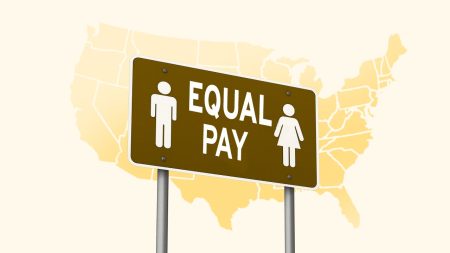Key takeaways
- Construction loans are short-term loans that you can use to build a home.
- Some construction loans can be converted to mortgages after your home is finished.
- Construction loans typically have tougher qualifying criteria and higher interest rates than conventional mortgages for existing homes.
What are construction loans?
Construction loans fund the building of a residential home — also called a stick-built house — from the land purchase to the finished structure. There are multiple types of construction loans, including options that convert to a permanent mortgage once the building phase is done and others that cover only the construction phase.
What costs are covered by a construction loan?
You can use a construction loan to cover such costs as:
- The land/lot
- Contractor labor
- Building materials
- Permits
However, construction loans don’t include design costs. If you want to hire a professional architect or interior designer, you’ll need to pay for that separately.
How do construction loans work?
The initial term on a construction loan generally lasts a year or less, during which time you must finish the project. You or your general contractor must provide the lender with a construction timeline, detailed plans and a realistic budget. Based on that, the lender will release funds, usually directly to the contractor, when major milestones are completed — for example, when the foundation is laid or the framing of the house begins.
Construction loans vs. traditional mortgages
Beyond the term length, construction loans and mortgages have a few main differences:
- Draws and inspections: Unlike mortgages and home equity loans, which provide funds in a lump-sum payment, the lender disburses funds — called “draws” — for a construction loan in stages as the project progresses and undergoes inspections. Expect four to six inspections during the project.
- The repayments: With a mortgage, you start repaying the principal and interest right away. With construction loans, your lender typically requires interest-only payments on the funds drawn to date during the construction stage.
- Requirements: As with mortgage borrowers, construction loan borrowers need to be financially stable and able to make a down payment. But since there’s no property to appraise, lenders also want to see a construction plan and a detailed outline of the project when deciding how much to lend.
Construction loan rates
Unlike traditional mortgage rates, which are often fixed, construction loans usually have variable rates that fluctuate with the prime rate. That means your monthly payment can also increase or decrease based on the broader market.
Construction loan rates are also typically higher than traditional mortgage rates by about a percentage point. That’s partially because they’re not backed by an asset. With a traditional mortgage, your home acts as collateral, and if you default on your payments, the lender can seize your home. With a home construction loan, the lender doesn’t have that option, so they tend to view these loans as bigger risks.
Construction loan requirements
The companies that offer construction loans usually require borrowers to:
- Be financially stable. To get a construction loan, you’ll generally need a credit score of at least 680, a low debt-to-income ratio and proof of sufficient income to repay the loan.
- Make a down payment. While you may be able to put just 3 percent down on a traditional conventional mortgage, a lender for a construction loan may require closer to 20 percent. The exact amount varies by lender and loan amount.
- Have a construction plan. Lenders will want a detailed plan and schedule from a reputable construction company.
- Get a home appraisal. Whether you’re getting a construction-only loan or a construction-to-permanent loan, your lender will want to be certain that the home is — or will be — worth the money they’re lending you. The appraiser will assess the blueprints, the value of the lot and other details to arrive at an accurate figure. For construction-to-permanent loans, the home will serve as collateral for the mortgage once construction is complete.
Types of construction loans
Different construction loan types are designed to suit different borrowers.
Construction-to-permanent loan
A construction-to-permanent loan morphs into a traditional mortgage once the house is complete. At that point, you’ll make payments that cover the interest and principal, as you would with any mortgage. Typically, you can choose between a fixed or adjustable rate and a term of 15 to 30 years.
While many construction loans are conventional loans — entirely privately originated and financed — there are government versions as well. Your options include an FHA construction-to-permanent loan — with less stringent approval standards that can be especially helpful for some borrowers — or a VA construction loan if you’re an eligible veteran.
Whatever the type, the big benefit of the construction-to-permanent approach is that you pay only a single set of closing costs, reducing your overall expenses.
Note that some lenders allow you to transition a construction loan into a permanent mortgage — also called an end loan — but will require a separate closing.
Construction-only loan
A construction-only loan provides the funds necessary to build a home, and you’ll repay it in full at the end of the term. You can settle the debt in cash or with a mortgage.
While you might get better terms with the new mortgage, you’re likely to pay more overall because you’ll complete two separate transactions and pay two sets of closing costs. And, of course, you have to invest time and energy shopping for a mortgage.
Another consideration: If your financial situation worsens during the building, you might not be able to qualify for a mortgage later on — and might not be able to move into your new house.
Renovation loan
If you want to upgrade an existing home rather than build one, you can compare home renovation loan options.
“If a homeowner is looking to spend less than $20,000, they could consider getting a personal loan or using a credit card to finance the renovation,” says Steve Kaminski, head of U.S. Residential Lending at TD Bank. “For renovations starting at $25,000 or so, a home equity loan or line of credit may be appropriate if the homeowner has built up equity in their home.”
In a low-rate environment, you could also consider a cash-out refinance. In this situation, you take out a new mortgage for more money than your current loan and receive the extra in a lump sum. But if you’ll get a higher rate on your new loan than your original one, a cash-out refi is less appealing.
With refis or home equity loans, the lender generally doesn’t monitor how the homeowner uses the funds. You’ll manage the budget, the plan and the payments for your renovation project. With some renovation loans, the lender will evaluate the builder, review the budget and oversee the draw schedule.
Owner-builder construction loan
Owner-builder loans are construction-to-permanent or construction-only loans in which the borrower also acts in the capacity of the home builder. Lenders typically allow this option only if the borrower is a licensed builder by trade.
Pros and cons of a construction loan
Pros
- Interest-only payments during the construction phase
- May have more flexible loan terms than a traditional loan
Cons
- Higher interest rates and larger down payments than traditional mortgages
- Funds released in stages rather than all at once
- May have to pay two sets of closing costs
How to get a construction loan
In some ways, getting approval for a construction loan is similar to getting a traditional mortgage. You’ll need to meet financial requirements and make a down payment. But there are also some major differences. Generally, you’ll follow these steps:
- Find a licensed builder: Lenders will want to know that your chosen builder has the expertise to complete the home. Ask for recommendations or search the NAHB’s directory of local home builders’ associations to find contractors in your area. Just as you’d compare multiple existing homes before buying one, it’s wise to compare different builders to find the right combination of price and expertise.
- Find a construction loan lender: Research the specific programs of several experienced construction loan lenders, including smaller regional banks or credit unions. Compare construction loan rates, terms and down payment requirements to ensure you’re getting the best possible deal.
- Get your documents together: A lender will likely ask for a contract with your builder that includes detailed pricing and plans for the project. Include references for your builder and proof of their credentials. This is in addition to the same financial documents you’d need for a traditional mortgage, like pay stubs and tax statements, as well as proof of assets and employment.
- Get preapproved: Getting preapproved for a construction loan helps you understand how much you might be able to borrow. This will help you finalize the budget with your builder.
- Get homeowners insurance: Even though you’re not yet living in the home, your lender will likely require a prepaid homeowners insurance policy that includes builder’s risk coverage. This way, if something happens during the construction process — the halfway-built property catches on fire or someone vandalizes it, for example — you’re protected.
FAQ
Additional reporting by Ashlee Tilford
Read the full article here









